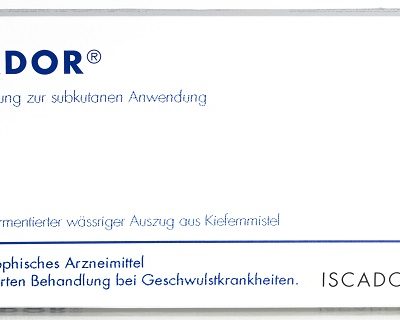Posted Nov 11, 2012
Does a healthy diet cost more than a junk-food diet in America?
That depends on whom you ask, how you measure food and, most important, if you know how to cook.
Earlier this year the U.S. Department of Agriculture released a new analysis indicating that fruits, vegetables, grains and low-fat milk tend to be less expensive by weight and serving size than fatty, sugary foods and meat, fish and poultry.
The takeaway message, according to its authors: Healthful foods actually cost less than foods we are supposed to restrict.
This ran counter to many studies that have measured the cost of “good” and “bad” foods by calorie and concluded that nutrient-poor foods generally cost less.
But recently another group of researchers, including Adam Drewnowski, director of nutritional sciences at the University of Washington in Seattle, decided to look at it from another angle: by the cost of foods that deliver key nutrients, especially those associated with lower risk of chronic disease.
In the study, they found that the foods rich in key nutrients did cost more per calorie than their nutrient-poor counterparts.
“By contrast, nutrients associated with higher disease risk were associated with lower diet costs,” wrote Drewnowski and his colleagues in the study. “The cost variable may help somewhat explain why lower-income groups fail to comply with dietary guidelines and have highest rates of diet-related chronic disease.”
USDA researcher Andrea Carlson objects to the way Drewnowski’s group used calories as a standard of measurement. And Drewnowski objects to the way the USDA used weight as a measurement when, he notes, some of the fruits and vegetables included are composed of 90 percent water.
But the two can agree on one thing: Those who know how to cook are at an advantage when it comes to nutrition on the cheap.
“Theoretically, yes, you can eat healthfully on a budget,” Drewnowski says, but you need to know how to cook whole, unprocessed foods, and that “would require a shift in the way many Americans choose to spend their food dollars.”
His diet analyses find that today many low-income food dollars are spent on processed convenience foods, but if they were instead spent on whole foods, they could go much further.
For this to work, people would need “nutrition education, cooking skills, access to healthy foods, some money and time,” Drewnowski stresses.
“Very often I get letters from people who say that it doesn’t cost any more to eat healthy,” he says. “They say rice and beans are very cheap, but not everyone knows how to make them. … And so as a result, people fall into the pattern of buying processed and less healthy foods.”
Noting that more Americans are reliant today on food stamps than ever, the consumer advocates at the Environmental Working Group have teamed up with anti-hunger organization Share Our Strength to produce “Good Food on a Tight Budget,” an online guide to buying and cooking cheap nutritious food, released in late August.
Drewnowski has also been working on something he calls the Nutrient Rich Food index, which judges food based on nutrients and cost to help people get the most nutrients on their plate for their money.
Other answers may lie in data he is analyzing about people who are able to eat nutritious diets on unusually small budgets.
“This is a study in progress,” Drewnowski said. “But in at least one case, the person was a recent Asian immigrant who was going to the market and getting fresh produce and going back home and cooking it. In this case he had the knowledge and the cooking skills that are essential.”
Carlson further suggests that Americans could benefit from spending a larger percentage of their food budget on fruits and vegetables. The correct number is about 40 percent, she estimates, more than most of us spend.
And as if we need more proof that cooking is important, Drewnowski said he is in the early stages of yet another study that so far indicates: “The more time you spend in the kitchen, the better your overall diet quality.”
One idea
Discussions of the best options for cheap, tasty nutritious meals often boil down to three words: rice and beans. Depending on how you prepare the combo, it can be dull and boring or downright delicious.
As a child I looked forward to my Puerto Rican grandmother’s rice and beans as a Monday delicacy, and my kids love Nana’s rice and beans, flavored with a sofrito (diced sauteed vegetables), just as much.
The rice
Heat 4 cups water to a boil in a kettle. Meanwhile, cook the 2 cups brown or white rice and 1/2 teaspoon salt with 1 tablespoon lard or olive oil in a saucepan over medium heat, stirring to coat the rice with the fat. Pour the water over the rice. Let the water boil down until you can see the surface of the rice. Cover; turn to a very low flame. Simmer until the rice is tender.
The beans
Cover 3 cups dried beans with 2 inches water in a bowl or stockpot. Soak overnight. Drain the soaking water from the beans. Place the beans in a stockpot; fill with water to cover beans by 1 inch. Heat to a simmer; simmer until soft, 1 hour or more. Wait until beans are tender before adding 1 teaspoon salt. Taste for seasoning. Meanwhile, heat 1 tablespoon olive oil or lard in a heavy-bottomed saucepan; add 1/2 green pepper, finely diced;
1/2 onion, finely diced; and 3 cloves garlic, minced. Season with a pinch of salt. Cook until fragrant and tender. Stir in 1/4 cup cilantro; cook until herb gives off its aroma. Add half a can (from an 8-ounce can) tomato sauce; cook to meld flavors. Drain the cooked beans, saving 1 cup cooking water; pour beans into the sofrito mixture. Add cooking water; heat to a boil, then turn down to a simmer. Salt to taste. You also can add half packet of Sazon Goya seasoning blend and/or 1/4 cup chunks cooked winter squash for extra flavor and texture.
Serve over the rice with a nice green salad. Makes: 6 servings
Breakdown of cost
Rice 92 cents
Beans $2
Olive oil 60 cents
Green pepper 40 cents
Onion 50 cents
Garlic 20 cents
Cilantro 12 cents
Tomato sauce 45 cents
Total: $5.19
Per serving: 87 cents
meng@tribune.com
©2012 the Chicago Tribune
Visit the Chicago Tribune at www.chicagotribune.com
Distributed by MCT Information Services





